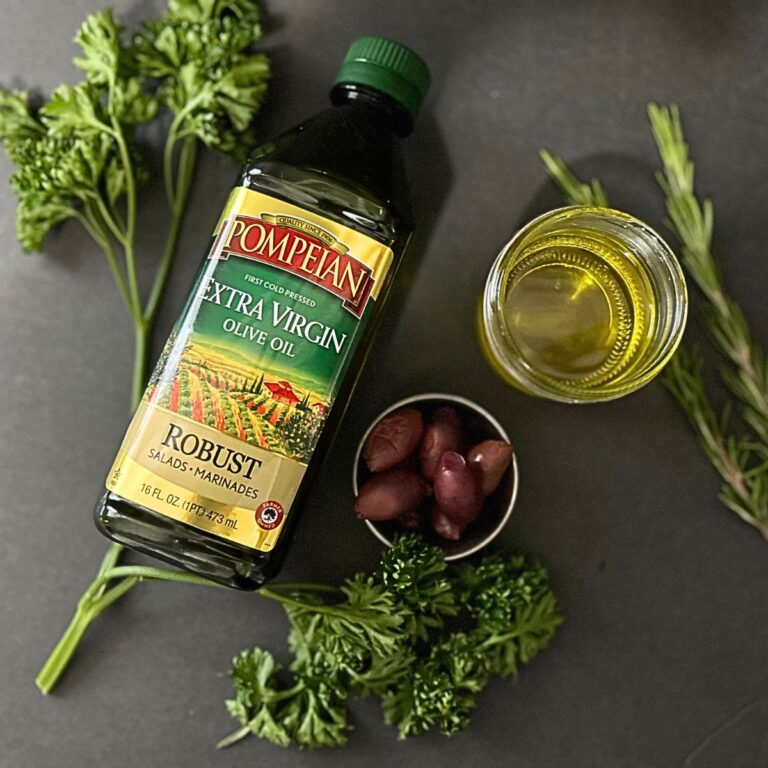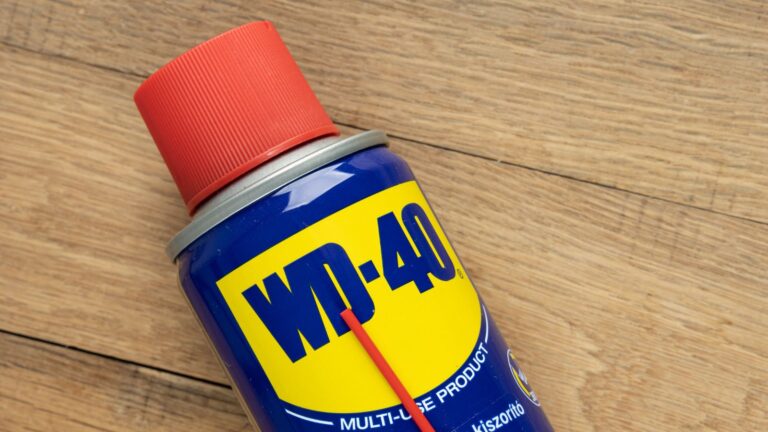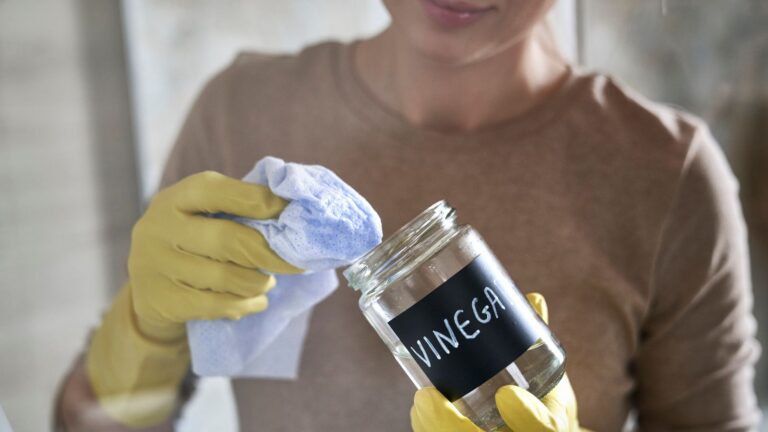This post may contain affiliate links.
A high-quality cutting board is an essential tool in every kitchen. Wooden cutting boards can last for generations if you take good care of them.
But how do you clean and care for a wooden cutting board? In this article, we cover how to care for and clean cutting boards, including what to do with a brand new wooden cutting board, so that yours can last until you are ready to pass it on to the next generation! Plus, we answer the age-old question – can you wash your cutting board?
Why do we prefer wooden cutting boards?
Wood is a natural material that is durable and beautiful, so it looks great in your kitchen. Large wooden cutting boards are also very practical because they stay in place and don’t slide around, especially if they have rubber feet on the bottom.
But did you know that a wooden cutting board is also easier on knives than plastic or metal alternatives? Wood is a softer material, so it won’t dull your knives as quickly.
We also love using wood instead of plastic because it comes from natural sources, is biodegradable, and doesn’t require the use of fossil fuels in its production. For the most environmentally-friendly option, look for wooden pieces that are locally or sustainably sourced.
With proper care, a wooden cutting board can last for years. Compared to a plastic cutting board, which can start to show wear and tear after just a few uses, a wooden cutting board will age gracefully.
Can you wash wooden cutting boards?
Yes! You can wash wooden cutting boards! In fact, you should wash your cutting boards after each use. This is true even if you are just using it for one thing – like slicing lemons – because bacteria can be transferred from the item being cut to the board itself.
Washing your cutting board is simple: just use hot, soapy water and scrub it clean. You can also use a diluted vinegar solution – one part vinegar to four parts water – as an all-natural disinfectant. If you want to take extra precautions, you can also rinse your cutting board with hydrogen peroxide (three percent solution) or a bleach and water solution (one tablespoon of bleach per gallon of water).
Once you’ve washed your cutting board, make sure to dry it completely. You can even set it in the sun for a bit to help speed up the drying process and kill any lingering bacteria. A well-seasoned cutting board should have no problem with being washed, as its seasoning has closed up any pores that would absorb liquid and it is more water-resistant, but you do need to make sure you give it time and space to dry.
Never put your cutting board in the dishwasher, though – the harsh chemicals and high temperatures can damage the wood, causing it to warp or crack.

Why do cutting boards need to be seasoned?
Wood cutting boards need to be seasoned so that they are more resistant to staining and moisture. Seasoning your cutting board helps to fill in any pores in the wood and creates a barrier against moisture. If you have ever seen a cutting board that is warped, dried out, or splitting you are likely seeing a cutting board that was never seasoned. Water gets into the grains of the wood and causes the wood to expand, thereby changing the shape of the cutting board in undesirable ways.
An unseasoned cutting board that gets warped can still be used, but it will rock on your surface. One that has split should not be used for food because bacteria can get into that split area and grow – food that you prepare on the cutting board can get contaminated.
Seasoning a cutting board – also called conditioning – simply means rubbing it with oil or conditioner and letting it soak in. It is very easy to do, and should be done frequently for newer cutting boards then regularly when older cutting boards start to look dry.

What kind of oil or seasoning is best for cutting boards?
You cannot use just any oil to season your cutting board. Most cooking oils – like olive oil, canola oil, etc. – will go rancid over time. If you rub them into your cutting board the rancid oil can cause the cutting board to smell and can leech into any food that you prepare on the board.
You need to choose an oil that is not susceptible to this rancidification process, and is also FOOD-SAFE. Safe choices include mineral oil, fractionated coconut oil, and beeswax (in its melted or solid form). Which one you use is up to you, but we moved from mineral oil to fractionated coconut oil because we wanted to avoid petroleum-based products (yes, mineral oil comes from petroleum). You can get fractionated coconut oil online. It is simply a coconut oil variety that has been processed to retain its liquid form.
You can also use a conditioner designed specifically for cutting boards, like this one from our sister business The Happy Hive. Our cutting board conditioner combines fractionated coconut oil with beeswax so you get oil that absorbs deeply and beeswax that helps to form a moisture and protection barrier. This recipe is the same as our beeswax furniture polish, if you want to make it at home!
How often should a NEW wooden cutting board be seasoned?
It is important to season a new cutting board well before using it. To season your cutting board, you will rub it all over with a food-safe oil like mineral oil, coconut oil, or beeswax (or a combination). Then, let the oil soak in for at least an hour before wiping off any excess. If your cutting board is fresh wood that has never been seasoned, I recommend seasoning daily for a week; then weekly for a month. Then, you can move on to recommendations for long-term upkeep (below).
How often should older wooden cutting boards be seasoned?
The simple answer here is to season your cutting board when it looks “thirsty.” Thirsty wood looks dry and light in color. It feels rough to the touch, and may start to show scratches and marks more.
To build on the scenario presented above, if you were to season a new cutting board daily for a week and then weekly for a month, you would then season monthly for a year. After that point you can season “as needed.” This isn’t rocket science, but it is essential if you don’t want a split or warped board.
We keep a tin of our cutting board conditioner right in the drawer of our kitchen island for easy access when our wood starts to look thirsty.
And P.S., you should actually season most wooden things in your kitchen – spoons, knife handles, salad servers, bowls, etc.!

Should you use a wooden cutting board for meat?
The one exception to my love of wooden cutting boards is raw meat. Technically, you can cut raw meat on a wooden cutting board, but I don’t usually recommend it. Even a well-treated cutting board is still slightly porous, meaning liquid can seep into the wood. I just don’t want to mess with raw meat juices infiltrating any weaknesses in my cutting board. Those juices can contain harmful bacteria, which is the last thing I want near my food.
For raw meat, I recommend using a plastic cutting board or a bamboo cutting board. Bamboo is naturally antimicrobial and antibacterial, so it’s better for meat prep. Plus, it’s environmentally friendly and sustainable. Plastic cutting boards can typically withstand the dishwasher so you can more easily sanitize your plastic cutting board this way.
If you are going to use a wooden cutting board for meat, make sure to wash it immediately after use with hot, soapy water (or a vinegar solution) and then disinfect it with hydrogen peroxide or a bleach and water solution.

Carrie Williams Howe is an educational leader by day and an aspiring homesteader by night and weekend. She lives on a small homestead in Vermont with her husband, two children, and a rambunctious border collie. She blogs about her family's homestead life at The Happy Hive.






